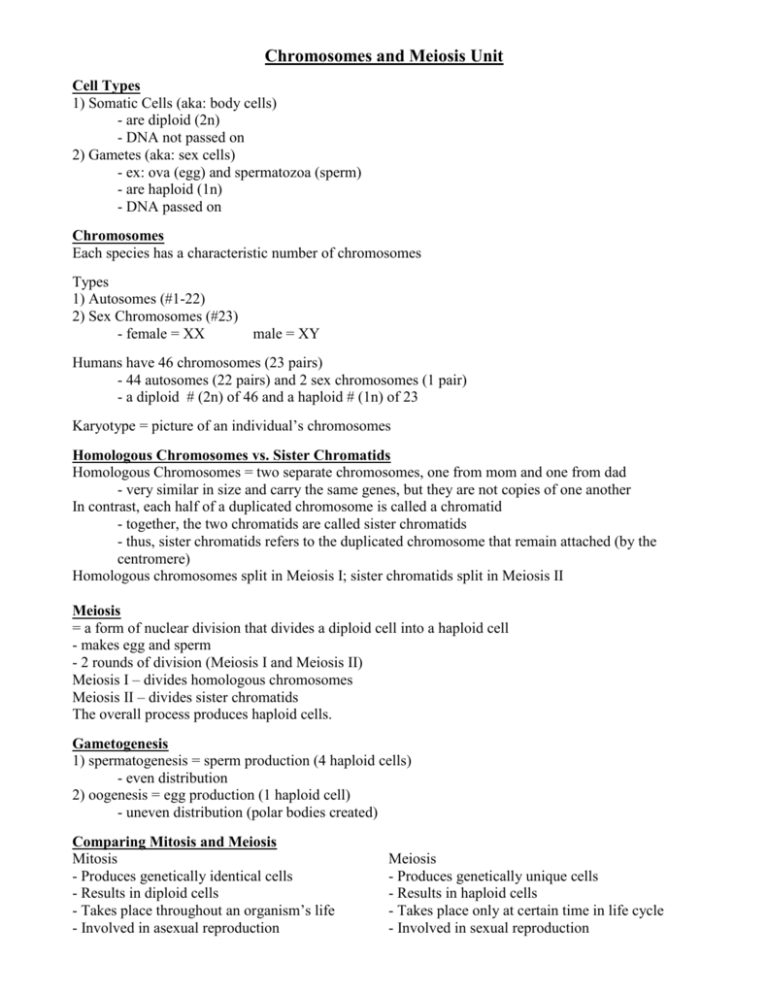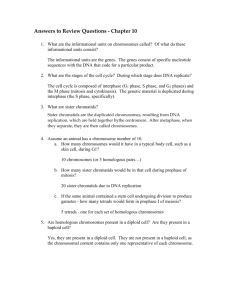Chromosomes and Meiosis Unit
advertisement

Chromosomes and Meiosis Unit Cell Types 1) Somatic Cells (aka: body cells) - are diploid (2n) - DNA not passed on 2) Gametes (aka: sex cells) - ex: ova (egg) and spermatozoa (sperm) - are haploid (1n) - DNA passed on Chromosomes Each species has a characteristic number of chromosomes Types 1) Autosomes (#1-22) 2) Sex Chromosomes (#23) - female = XX male = XY Humans have 46 chromosomes (23 pairs) - 44 autosomes (22 pairs) and 2 sex chromosomes (1 pair) - a diploid # (2n) of 46 and a haploid # (1n) of 23 Karyotype = picture of an individual’s chromosomes Homologous Chromosomes vs. Sister Chromatids Homologous Chromosomes = two separate chromosomes, one from mom and one from dad - very similar in size and carry the same genes, but they are not copies of one another In contrast, each half of a duplicated chromosome is called a chromatid - together, the two chromatids are called sister chromatids - thus, sister chromatids refers to the duplicated chromosome that remain attached (by the centromere) Homologous chromosomes split in Meiosis I; sister chromatids split in Meiosis II Meiosis = a form of nuclear division that divides a diploid cell into a haploid cell - makes egg and sperm - 2 rounds of division (Meiosis I and Meiosis II) Meiosis I – divides homologous chromosomes Meiosis II – divides sister chromatids The overall process produces haploid cells. Gametogenesis 1) spermatogenesis = sperm production (4 haploid cells) - even distribution 2) oogenesis = egg production (1 haploid cell) - uneven distribution (polar bodies created) Comparing Mitosis and Meiosis Mitosis - Produces genetically identical cells - Results in diploid cells - Takes place throughout an organism’s life - Involved in asexual reproduction Meiosis - Produces genetically unique cells - Results in haploid cells - Takes place only at certain time in life cycle - Involved in sexual reproduction







